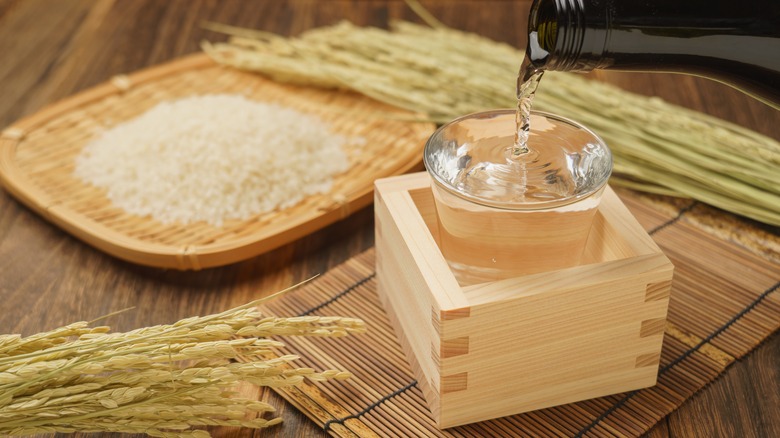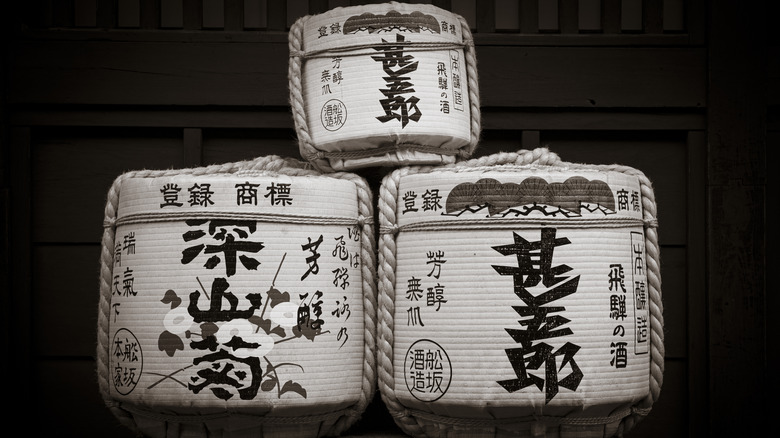Does The Age Of Your Sake Affect How It Tastes?
There are plenty of alcoholic beverages that get better with age, such as aged wine and whiskey, but sake isn't usually included on that list. The vast majority of sake is produced unaged and meant to be drunk within a year of being bottled. But there is a growing minority of aged sakes which are starting to arrive on the market. Aged sake is known as koshu. You can recognize it by its rich amber color and heavier flavor, often sweet and nutty with touches of bitterness and umami — not unlike sherry.
Aged sake is nothing new. There are records of sake being aged, typically for three to five years, that go back to the 13th century. And in the 17th century, we can see a nine-year sake was popular among the aristocrats. But somewhere along the way, the practice of aging sake fell off. Unaged sake has always been the dominant form, especially outside of the upper class, but today it is almost universal.
There are essentially three ways to age sake. In the olden days, wooden barrels made of cedar were used. This gave the sake a fresh, woody taste which was highly sought after. The downside was that sanitation practices weren't ideal and the sake often ended up spoiling. Today, metal vats are used that do not impart flavors but that affect the taste all the same. The final way to age sake is in the bottle itself.
Modern maturation
Sake is somewhat unique among alcoholic drinks in that its alcohol content is high enough that sake takes a long time to spoil but it's not so high that it's shelf stable indefinitely. If you were to age whiskey in a metal vat, there would be very little that would change in terms of flavor. Whiskey is often aged in oak barrels. It enters the barrel in a form known as white dog, which is clear. As the whiskey spends time in the barrel, it gets its aromas and color from the wood itself. If white dog was placed in a metal vat, not much would change.
That's not the case for sake. If sake were aged in wood, it would receive the same benefits that whiskey enjoys, but aging sake in metal is the modern preference. In this sense, aging sake is more similar to the process of aging wine, which also uses metal vats that don't impart flavor. Sake brewers may choose to add ingredients into the vat to age with the sake, such as individual pieces of cedar, but not always. Also like wine, sake can be aged after it's bottled. The same can't be said for whiskey and other spirits due to their higher proof point. But aged sake is more often aged by the producer and then bottled when it's ready. Still, you wouldn't normally wait longer than a year to drink it.

